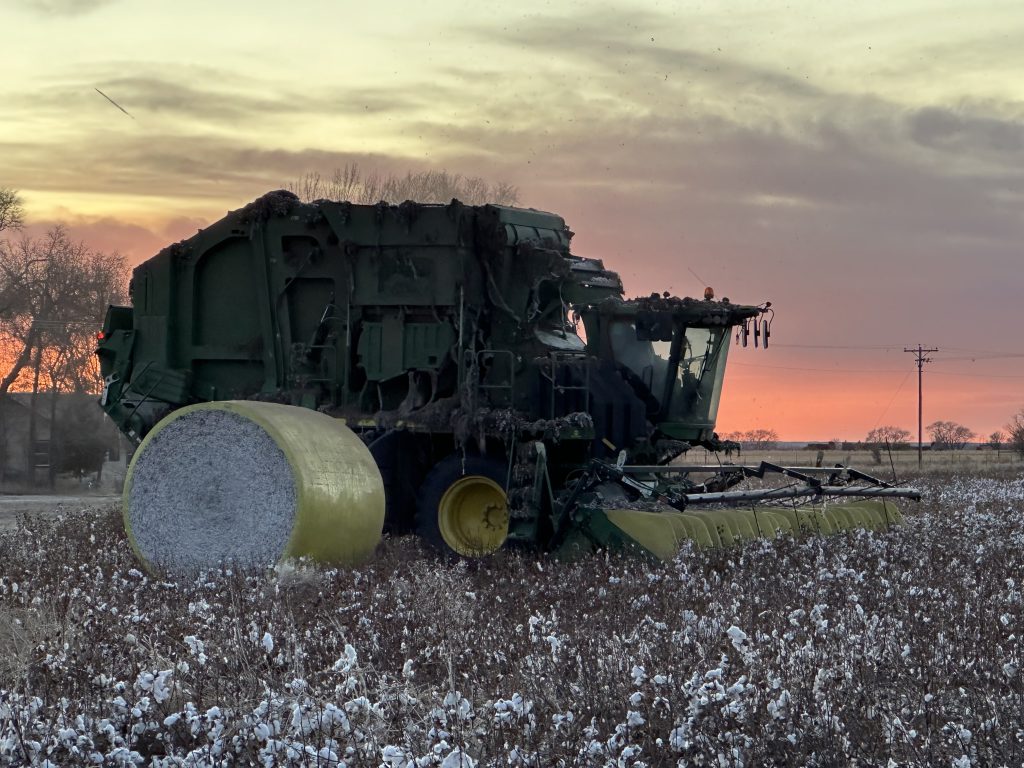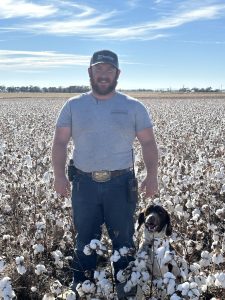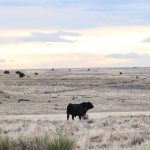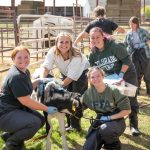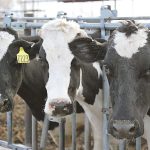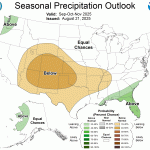Making way for Colorado cotton
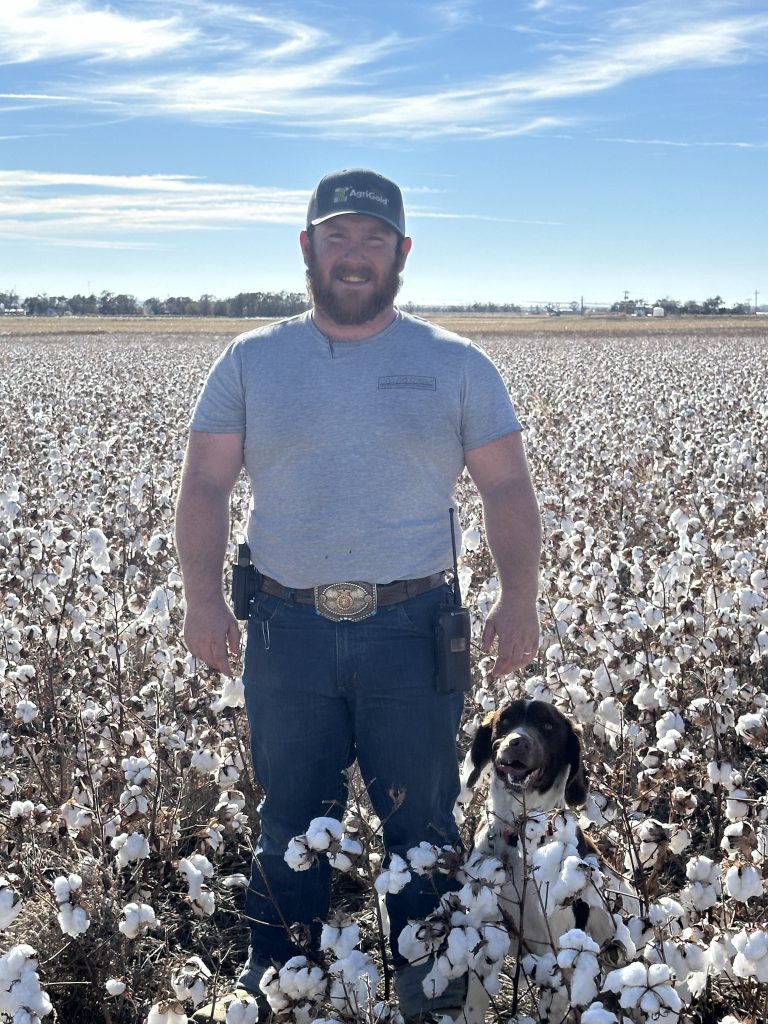
Cotton2-RFP-101325
Caleb Wertz grew up farming the same southeastern Colorado land near Hasty his family has worked for five generations. But when faced with rising input costs and limited water, he knew something had to change.
“I’m the fifth generation to farm this ground,” said Wertz. “Farming is just in our blood. We love making stuff grow and stewarding the ground God gave us.”
For decades, the Wertz family focused on corn and alfalfa in the Arkansas Valley. But in recent years, the economics became harder to ignore. Water supplies dwindled, and production costs climbed. They needed a crop that used less water but still offered a solid return.
Even though cotton had never been grown successfully in Colorado, Wertz believed it could be the right fit for their operation.
“Finding a crop that cash flowed better and something that conserved water, we decided cotton was the way to go,” he said. “Cotton does all of those things. It just fit a niche that we were looking for.”
Cotton brings in similar revenue per acre as corn, but requires far less fertilizer and water. That makes it a natural choice for hot, dry areas and more sustainable in drought conditions.
“Cotton uses a little less than a third of the water that corn does to produce a pretty similar revenue per acre,” Wertz said.
Some neighbors were skeptical of planting cotton in Colorado’s climate, but Wertz pointed to the region’s similarities with established cotton-growing areas nearby.
“Our soil conditions and climate is pretty similar if not identical, or better in some instances to southwest Kansas, Oklahoma Panhandle and Texas,” he said. “So on paper, there’s no reason we shouldn’t be doing it.”

FREEZE, SEED AND WEEDS
The biggest hurdle is Colorado’s earlier freeze compared to those southern regions. That risk has kept most cotton out of the state until now.
“The only thing that has kept people afraid of it is when we freeze, which is definitely one of the struggles,” Wertz said. “We didn’t have any trouble with the freeze this year or last year, so it’s been pretty textbook so far.”
Wertz credits improved seed genetics for helping cotton succeed farther north than ever before.
“With technology, the genetics of the cotton is very conducive to growing it around here in this climate,” he said. “I know there’s been a couple guys that have kinda tried it, which didn’t work out, but now the genetic quality is finally there.”
Weed pressure was one of the family’s main challenges in the early stages.
“We struggled a bit with weed control,” Wertz said. “Cotton doesn’t canopy as fast as corn, it’s pretty slow growing in the spring. You have to be prepared for the weeds to come on, unlike corn you can’t spray once and be good for the year. Cotton you have to baby a bit more.”
Aside from weed control, their first cotton crop performed well. They planted 85 acres and were pleased with the results.
“My only expectation was to try to do it,” Wertz said. “It did well last year. Our yield per acre was 1,500 pounds per acre in one field and close to that in the other field. It turned out pretty good, that’s better than average cotton in most places.”
A delayed harvest led to a slight drop in quality. That delay was caused by the difficulty of finding equipment to pick the crop.
“We did lack in quality a little bit this year, but that’s almost completely due to delay of harvest,” Wertz said. “We waited around for the cotton stripper to show up until the day before Christmas.
We did purchase a cotton stripper for this year so that will be really nice.”
The cotton stripper they used last year came from Friona, Texas. But with that equipment now on hand, the Wertz family expanded to 330 acres of cotton this season.
“This year we’re going to focus on spraying and planting timing,” Wertz said. “It’s a very timing oriented crop, so you have to be on top of it.”
Wertz sees cotton not only as a solution for his farm, but as a possible shift for others in the Arkansas Valley as well.
“I’ve got a lot of confidence in cotton having a place around here,” he said. “With our water situation, and just the overall mentality throughout the Ark Valley, I see it being a staple crop actually.”
Currently, most area farmers grow corn or alfalfa, both of which require large amounts of water. With irrigation becoming less reliable, cotton could help bridge the gap.
“Right now our main crops are corn and alfalfa, those are very water intensive crops,” Wertz said. “But with cotton being such a water conserving crop, I think that if it can produce similar revenue per acre as corn or alfalfa, more people will be willing to try it.”
THE FINANCES
Financially, their first season proved cotton could compete. The family produced three bales per acre of 1,500-pound cotton, sold at 68 cents per pound. They used no fertilizer, kept seed costs around $100 per acre, and said total input costs were similar to corn.
“There’s a lot to learn about cotton when you become a cotton grower,” Wertz said. “But unlike corn, you don’t have the trucking cost or processing cost at the gin.”
Most cotton gins transport and process cotton at no cost to the farmer, using by-products they collect to cover the cost. The nearest gin is two and a half hours away in Moscow, Kan., and it serves farms even farther than the Arkansas Valley.
“The Arkansas Valley’s weather and elevation, as well as how we irrigate is the most conducive to cotton production,” Wertz said. “I don’t think you could do it too far north or west into Colorado because of the earlier freeze.”
Now that they’re better equipped, the Wertz family plans to help neighbors with harvest as more farmers show interest in cotton.
“God has really blessed us and helped us through these learning moments,” Wertz said. “We’re looking to do 700 to 1,000 acres of cotton next year depending on how things go. I’ve also heard from quite a few neighbors who want to try it.”
For those curious about cotton, Wertz encourages them to reach out.
“The cotton community is very tight knit, and nobody is going to shun you for asking questions,” he said. “I’ve noticed the cotton community are very nice and genuine people.”
Wertz hopes cotton can be part of a larger movement to keep family farms viable in the region. He also hopes to start a growers association to support cotton producers across the state.
“The end all be all to all this, is I hope to see farms stay profitable in the next few years, and that they can stay in the hands of young producers and not into large investment groups,” Wertz said. “If we can create any opportunity for farmers to keep farming, that’s exactly what I want.”
